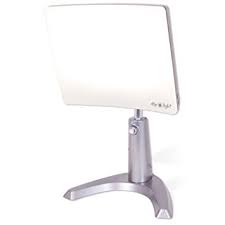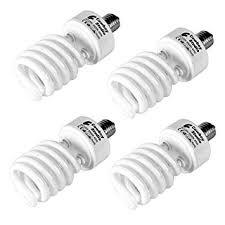Table of Contents
As fall turns to winter the amount of light from the sun starts to diminish. For many people seasonal affective disorder can disrupt their mood, energy level, productivity, and even their quality of life. What type of seasonal affective disorder lights can reverse your mood and make the winter more bearable?
Seasonal Affective Disorder • Causes
People subject to seasonal affective disorder (SAD) can feel tired and sad. They often want to sleep more, eat more food, have less sex, and at times, experience heightened anxiety.
The specific cause of SAD is unknown. However, some scientists believe that the onset of SAD is caused by, among other things, a disruption in the balance of the hormone melatonin-the hormone that tells your brain it is time to sleep.
The prevalence of SAD depends upon access to sunlight. Regions with sustained sunlight throughout the year have lower incidence of SAD while locations with a seasonal reduction in daylight have higher incidence. This explains why the prevalence of SAD in Florida is 1.4% and almost seven times that amount in the northern state of New Hampshire where its prevalence is 9.7%.

Seasonal Depression Light Bulbs and Lamps Therapy
Over the past few years we have learned a lot about how to treat this condition. Some medical professionals encourage their patients to manipulate their melatonin levels but that has not proven to be successful overtime. Another management option is to take antidepressants such as SSRIs but they come with a host of major issues.
Psychiatrist Richard A. Friedman, a professor of psychiatry at the Weill Cornell Medical College in New York advocates the use of seasonal affective disorder light therapy. In an interview on NPR he stated:
You want to basically fool the brain into thinking winter is not here and that the days are actually not getting shorter. You administer seasonal affective disorder lights in the morning and you essentially tell the brain, hey, it’s time to wake up.
You don’t need much exposure. Basically 20 to 30 minutes in the morning, when the brain is the most sensitive to seasonal affective disorder lights, does the trick.
Dr. Friedman goes on to say:
Seasonal affective disorder lights are highly effective, very safe, very few side effects. The treatment has an onset of action that’s much faster than antidepressants.
Dr. Friedman is also a proponent and practitioner of meditation.
How to Choose Seasonal Affective Disorder Lights
What type of seasonal affective disorder lights should you use if you live in a region with diminished seasonal light?
We live in Ottawa (well north of New Hampshire) and notice the quality of light change significantly near the end of October. For the past few years, my husband, Richard, and I have been using a compact fluorescent lamp (CFL) by Carex Health Day-Light each morning for thirty minutes as we eat breakfast.
While we find the lamp gives us a boost, Richard was finding he needed more light during the day. He found that he was less likely to go his fitness classes at the end of the day because his interest level was diminished by the seasonal change in light.
Luckily Richard does not have problems with his bone density but I still wanted to see him keep on his regular exercise schedule.
If you have osteoporosis or low bone density, you need to maintain your exercise activity level throughout the year and do not want to find yourself slowed down by the change in seasons. All the more reason to consider bringing new light into your life.
We liked the Day-Light but found the price, at around $150, a bit steep for extra units and the form factor awkward to use in Richard’s home office.
Readers in the US can find the Carex Health Brands Day Light at Amazon.com.
Readers in the Canada can find the Carex Health Brands Day Light at Amazon.ca.

Seasonal Affective Disorder Light Bulbs
Instead we looked for less expensive CFL lights that fit into a regular light fixtures. We found that seasonal affective disorder light bulbs for generated a comfortable light throughout the day to brighten up Richard’s office.
The Cowboystudio seasonal affective disorder lights are Full Spectrum 5,500K daylight lights.
Readers in the US can find these bulbs at Amazon.
Readers in Canada can find the bulbs at Amazon.ca.

Seasonal Affective Disorder Lights • Potential Safety Concerns
Health Canada has produced a safety bulletin on CFL lights and their potential risks. The report points out that although CFL lights emit UV “the amount of UV produced is so small that it is not considered hazardous to your health.”
Further, their study found that the although CFLs emit electrical and magnetic fields (EMF) “when compared to departmental and international science-based guidelines, the levels of emissions are well below the maximum levels of exposure. Health Canada does not consider the EMFs from CFLs to be a health risk.”
Finally, although the CFL lights contain mercury, the Health Canada study found that “while mercury is a highly toxic substance, only a very small amount is used in a CFL, about the amount to cover the tip of a ballpoint pen. There is no risk to your health when the lamps are unbroken. Even when a CFL is broken, there is a very low risk to your health, unless you mishandle it or store it carelessly.”
Since the light is fooling your brain to think that you are experiencing a sunny day, you should stop using the lights after 5:00 or 6:00 PM. Otherwise, you might have problems settling down to sleep at night.
Finally, avoid light generated from sources such as tanning beds that increase your exposure to harmful, carcinogenic UV light.
Seasonal Affective Disorder Light Bulbs • Bonus!
Richard found that there was an additional benefit to using the full spectrum lights in his office: the lights generated a high quality 5,500K light that renders colour consistent with daylight color and worked perfectly with his still photo and video cameras.
He has been able to set his camera meter to 5,500K knowing that the light quality is high and the color representation is true.
Another reason why CFL lights brighten Richard’s day!
Ageing Well
Visit my page dedicated to ageing well.

Comments